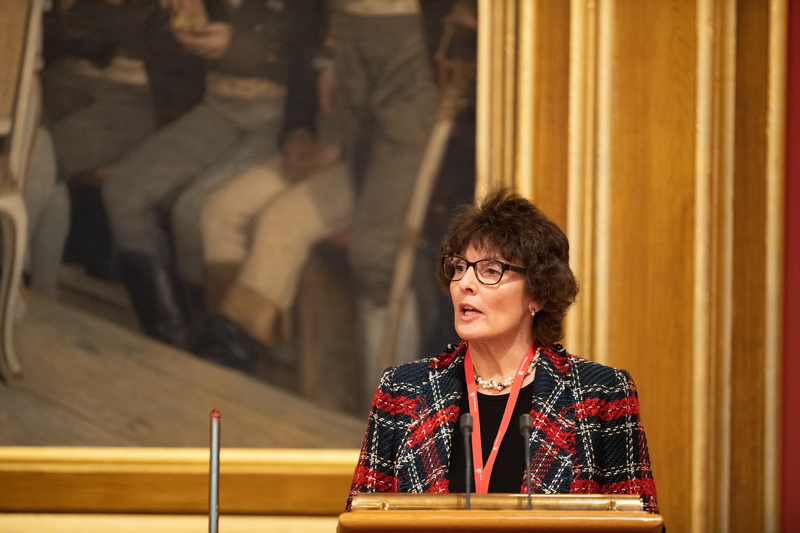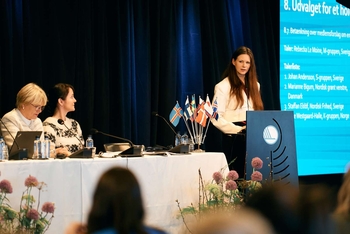One step closer to using eID in the Nordic region

Anne Berner, Finland's Minister for Nordic Co-operation, speaking at the session of the Nordic Council 2018 in the Norwegian parliament, Stortinget.
"The Nordic region is the world's most integrated region" - This is the mantra often repeated by many Nordic politicians when describing our region and our main competitive edge. Mobility and co-operation across national borders is a key element in the Nordic co-operation. Now the time has come for this to be transferred to the digital world, where a number of barriers still exist.
One example is prescription medicines, which can be picked up at a pharmacy in another Nordic country as long as you have the prescription on paper. However, if the prescription has been sent through the national electronic systems, it is not possible to collect the medicine in another country. As public services are digitised, it is therefore important for Nordic citizens to be able to identify themselves and use electronic services abroad.
Anne Berner, Finland’s Minister of Transport and Communications, presented the report on the work on the digital area at the Nordic Council Session in Oslo.
“There is an expectation among our citizens to which we are now working to respond. The Nordic countries have an opportunity to take the lead in the development and implementation of a common eID for the whole Nordic and Baltic region. It is therefore gratifying to hear that the first services will be available to citizens across the borders of the Nordic and Baltic countries by 2020,” says Anne Berner.
There is an expectation among our citizens to which we are now working to respond. The Nordic countries have an opportunity to take the lead in the development and implementation of a common eID for the whole Nordic and Baltic region.
Three years – three goals
The Nordic-Baltic eID project (NOBID) is being led by Norway and the Agency for Public Management and eGovernment (DIFI). The co-operation is based on the Nordic-Baltic Ministerial Declaration (Digital North), in which the use of national eID across borders is a key focus area. More than DKK 5.5 million has been set aside for the project during the mandate period 2018-2020.
- Identify digital services from which Nordic citizens could particularly benefit by using eID across borders.
- Launch initiatives to remove legal and technical barriers to the individual services and ensure interoperability.
- Document and communicate the value to citizens in the Nordic and Baltic countries of being able to use national eIDs to access digital services across borders.
says that much progress has already been made with the technical solutions. The most important thing in future is what the countries themselves do, when it becomes possible to connect.
“The Nordic countries will lead the way in the use of eID across borders. Here, we will build upon legislation and building blocks from the EU. Right now, we are now working on the solutions that must be in place. But in order for us to succeed, it is important that the countries connect their national eIDs to the solution and enable the necessary exchange of information that will provide access to the services,” says Alvik.
Right now, we are now working on solutions that must be in place. But in order for us to succeed, it is important that the countries connect their national eIDs to the solution




